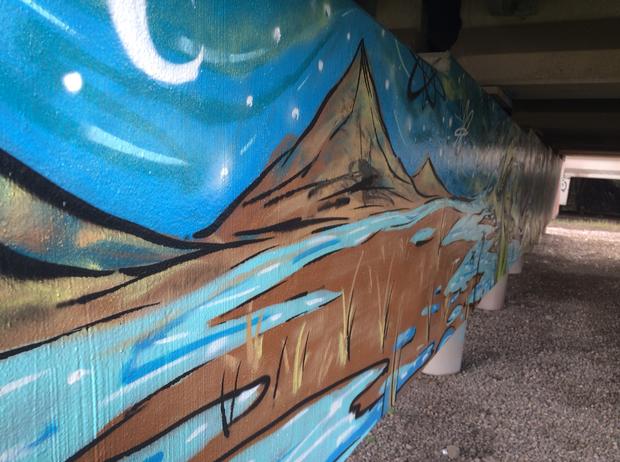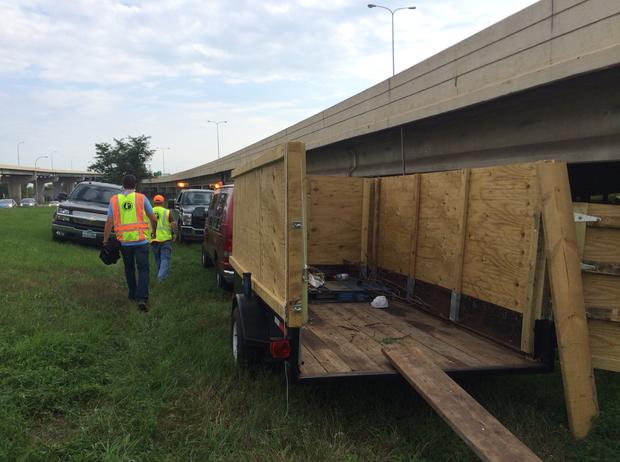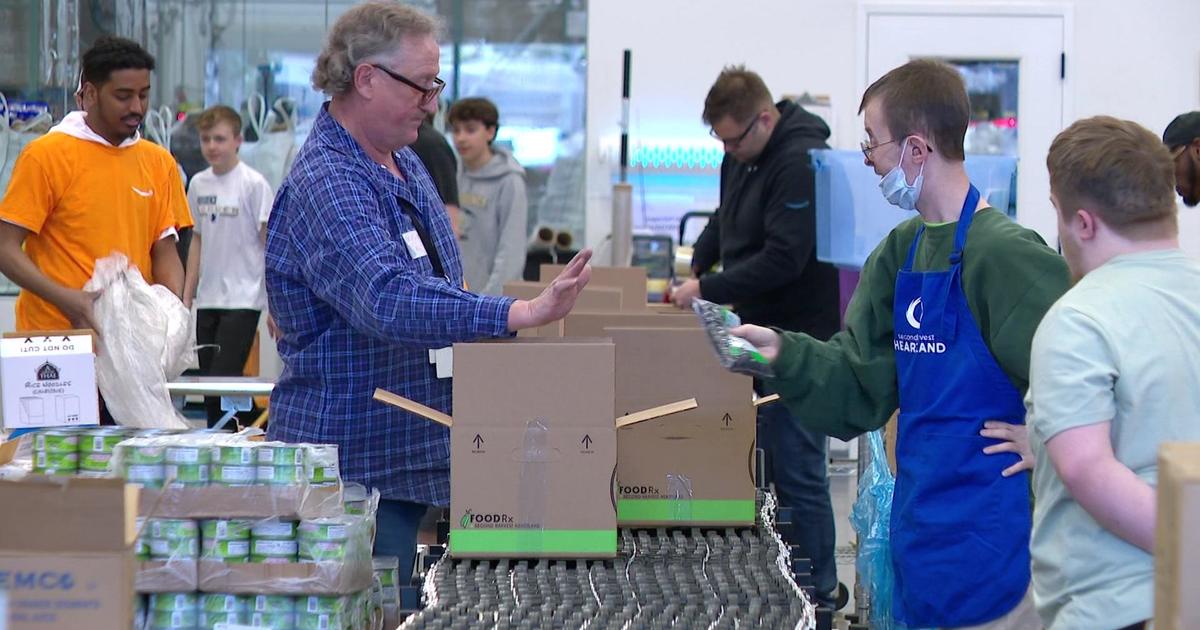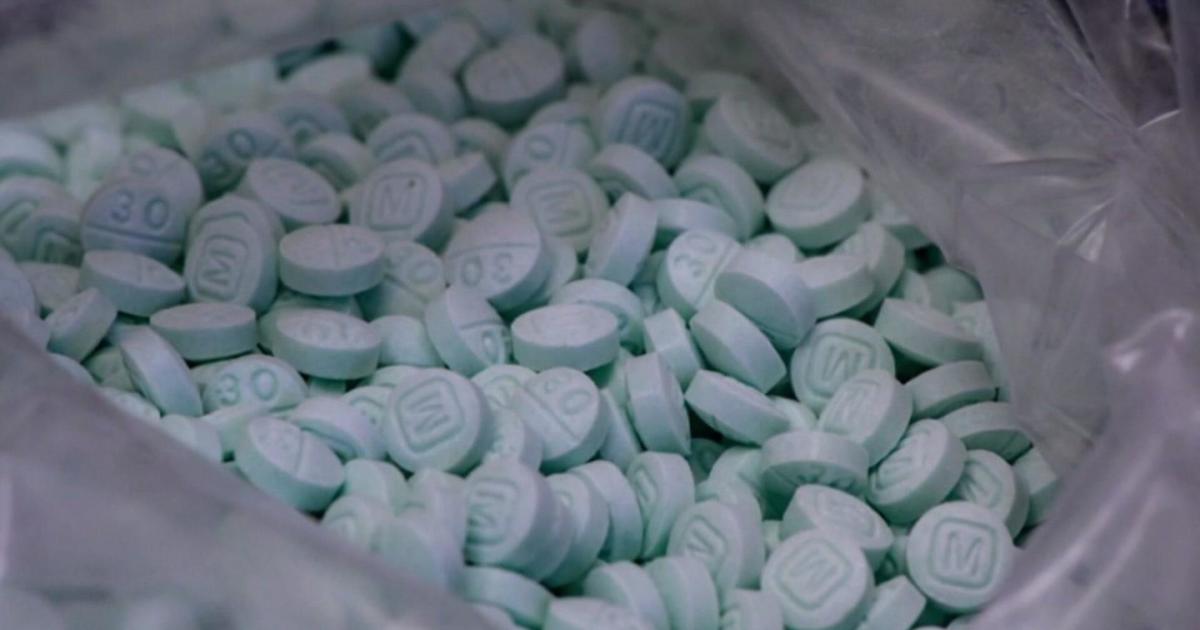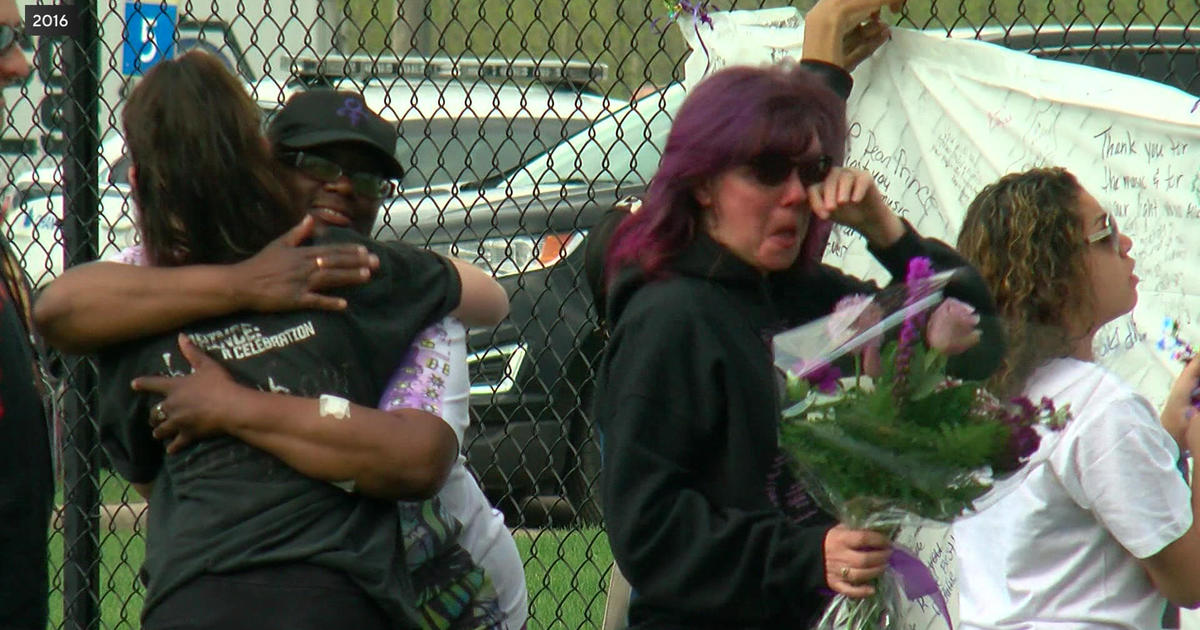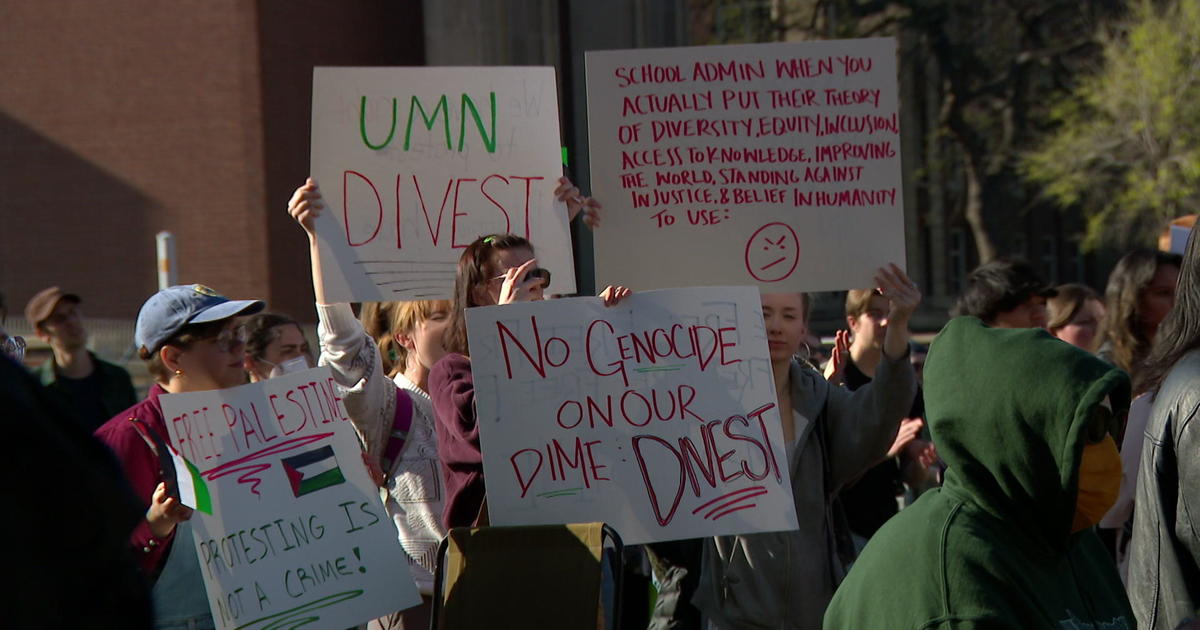Eviction & Toxic Spray: How MnDOT Cleans Bridges Of The Homeless
MINNEAPOLIS (WCCO) - Two blocks west of the Minneapolis Sculpture Garden, in a gravel-floored, open-air space roofed by five lanes of Interstate 394, lives a rotating group of homeless men, women, teens and families.
The low ceiling, charred black by the smoke of burned rubber tires, traps the heat and gives protection from snow and rain and wind. A landscape painting of psychedelic mountains and mushrooms illuminates a concrete wall. Possessions mingle with refuse: bicycles, beer cans, single-use dental floss, an atlas of Minnesota, blankets, rebar, rags, plastic bags, tupperware, a study prep textbook for the SAT math section.
Throughout Minneapolis and St. Paul, about 100 homeless people dwell in at least nine similar under-bridge campsites. With shelters filled to capacity, residents say they have no other choice.
"It's a safe zone," said David, a man in his mid-40s who asked his last name not be published. "There are roving bands downtown who target the homeless and take our stuff. Under the bridges, you feel comfortable."
Bridge cleaning
Two or three times a year, people like David are forcibly evicted from their makeshift homes, displaced by Minnesota Department of Transportation subcontractors wearing gas masks and all-white Tyvek biohazard suits.
MnDOT calls the process "bridge cleaning" and says it's necessary to protect highway inspectors from health hazards like needles, syringes, feces, lice, bandages and blood.
"It's for the safety of our employees," said Ryan Sodd, the MnDOT staffer in charge of attractive roadsides and safety features. "Ultimately, they're trespassing on state property. They're breaking down fences."
Breanna Schell, the street outreach program manager at St. Stephen's Human Services, said that while the sites may pose something of a health risk, she rarely sees anything worse than vodka bottles or trash and she trusts homeless residents who say they use nearby portable restrooms or shrubs rather than befouling their homes.
"We teach them that if you keep your space clean and organized, you're less likely to have a cleanout happen," Schell said. "But what's the problem with them camping when we can't even dignify putting a roof over someone's head? We all want the same thing. We all want safety. We all want security. We all want a warm place to lay our head at night."
Sodd said watching the Minnesota State Patrol move people from their homes is the hardest part of his job.
"It's heartbreaking," he said. "You feel for them, but you also see the blatant damage they do to the property they're trespassing on. It's a double-edged sword. You've got to be compassionate, but we also have a job to do."
Eviction
Since spring 2014, MnDOT has given street outreach teams at St. Stephen's in Minneapolis and Listening House in St. Paul at least one week's notice before evictions.
The introduction of the warning phone call, a MnDOT spokesperson said, was motivated by "compassion," but MnDOT doesn't give an exact date, nor does it post signs in the encampments, and street outreach teams often fail to adequately alert residents.
The morning of a bridge cleaning operation, the State Patrol gives residents 15 to 30 minutes to gather their belongings before a coat of toxic disinfectant is sprayed over what remains. Too frequently, it's the only notice they receive. (Authorities say the State Patrol has started warning residents a couple days before eviction, though all six evictees interviewed for this story said they'd never heard of the State Patrol giving advanced warning.)
With just minutes to pack up their lives, residents salvage only what they can carry. Birth certificates and state IDs are often lost in the commotion, Schell said.
David has been forced to abandon duffel bags, blankets and clothing, but it's the personal items he misses the most.
"I've lost photos of my family," he said. "My grandson. My daughter. My deceased brother. It hurts because you can't ever get them back. We'll try to argue, but it's pointless. When you're homeless and you're trying to take a shower, get clean clothing, that's not enough time. You can't always lug all your stuff around."
During a downtown bridge cleaning last Thursday, Charlotte Robinson, 57, loaded her wheelchair with her backpack and stashed blankets in the bushes so they wouldn't get sprayed. She then left her home on foot, pushing her wheelchair.
"I don't know where we're going to go," she said a few hours later, while panhandling with her boyfriend by an I-394 on-ramp.
(Nick Carpenter, a MnDOT spokesperson, said it would be "unethical" to allow a reporter in one of the encampments during an eviction because the "people are down on their luck." Carpenter later offered to share the time and location of a future eviction if I would agree to watch from a distance.)
During eviction, residents are told the area will be toxic for 24 hours. After the spray, the area is not patrolled overnight and no signs are posted. Most people keep away, Sodd said, but a few -- uninformed, confused or desperate -- return too soon and breathe the toxic fumes.
"Maybe we'll have to stay up for 24 hours," Amanda Datorre said shortly after her eviction. "We can't go back because they sprayed. When we go back, everything will be gone."
The day after spraying, MnDOT subcontractors return with wheelbarrows or skid-loaders, disposing of residents' leftover belongings and accumulated trash. David said he once watched as his living quarters were leveled by a MnDOT bulldozer.
"It's degrading," he said. "It makes you feel like you're less than the rest of society, like you don't belong."
MnDOT does not disturb the encampments during the wintertime, so they tend to swell with machinery, provisions and waste. In the spring, collections from just one site can be enough to fill a 40-yard dumpster.
Residents begin to return shortly after cleanouts, as soon as their desire for shelter overcomes their fear of the chemical spray.
"We're essentially just moving people from one part of the city to another," Schell said. "They may even move back to that same spot two weeks later. Are we solving the issue? Probably not. We're just doing a cleanout and then it's happening again."
'What's the choice?'
A MnDOT spokesman said the department couldn't say more accurately than "several years" how long it has been performing bridge cleanings. David said he remembered being evicted by the transportation department from beneath a bridge back in 2005.
There are about 50 warm-weather camping spots used by homeless residents of Minneapolis, many of which are never cleaned out by authorities, said Gail Dorfman, the executive director of St. Stephen's.
In the last decade, charitable organizations like St. Stephen's have forged productive partnerships with law enforcement, and Dorfman said a police officer who spots a homeless encampment is now more likely to phone a street outreach team for help than to slap on handcuffs.
"In Minneapolis and Hennepin County, we have a pretty coordinated social service response to homelessness, not a law enforcement response," she said. "When any of our clients who are unsheltered get ticketed, they never pay those tickets because they don't have money. They start compiling a long list of unpaid tickets, and the barriers to helping them just grow."
Mikkel Beckmen, who heads Hennepin County's Office to End Homelessness, said over the last eight years the number of people sleeping on the street has been cut in half, from 400 or 500 down to about 200.
"The people who get stuck on the streets are the most profoundly disabled folks," he said.
Beckmen characterized the long-term street homeless population as mostly "end-stage, chronic inebriated" alcoholics, veterans who "make it a source of pride" not to have to rely on shelters and people with mental health issues who can't tolerate the "crowded, loud" environments found in shelters and other housing options available to the extreme poor.
Shelters are overloaded across the cities, especially in summer months. For the more than 400 homeless teens in Minneapolis, there are only 70 shelter beds. Shelters routinely turn away dozens of people on a nightly basis.
When you can't afford housing in the Twin Cities, you quickly learn that our society won't necessarily designate a space where it's acceptable for you to exist. From trespassing and open bottle citations to zoning codes requiring running water in living areas to the designation of shopping malls and skyways as private spaces -- homeless Twin Cities citizens have been told 'You're not welcome" in countless bureaucratic dialects.
A recent U.S. Department of Justice statement of interest -- involving a Boise law banning camping in public -- suggests that telling people they're not welcome to sleep outside may be unconstitutional.
"When adequate shelter space does not exist," the DOJ statement reads, "if a person literally has nowhere else to go, then enforcement of the anti-camping ordinance against that person criminalizes her for being homeless."
Beckmen, Dorfman and other homeless service organization leaders said the DOJ statement sends a strong message that homelessness needs to be addressed by more housing, not more crackdowns.
"We shouldn't be dealing with extreme poverty by imposing restrictions on people's right to travel or to try to take care of themselves as best they can," Beckmen said. "If there isn't an adequate emergency shelter solution in a community, then what's the choice being offered?"
By Zac Farber
